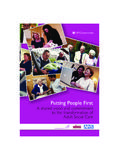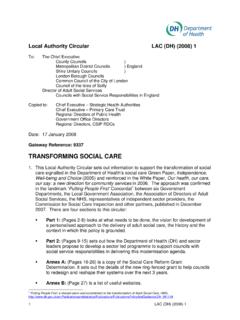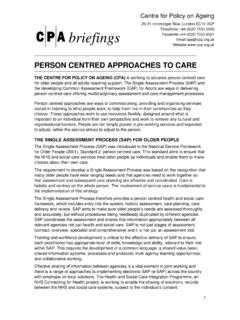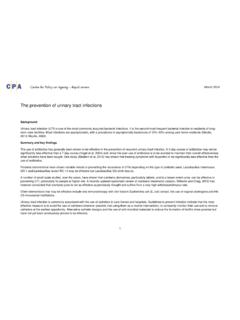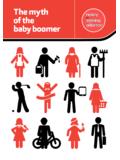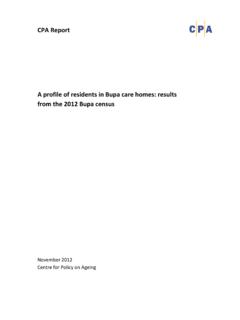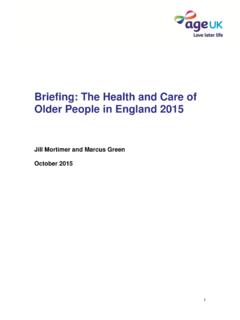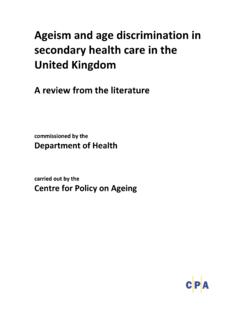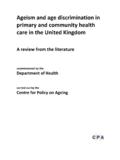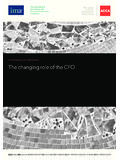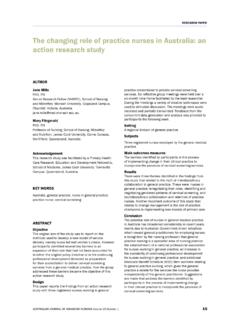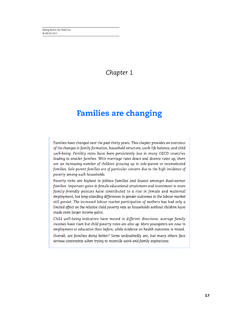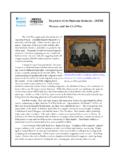Transcription of The changing care homes - CPA
1 The changing role of care homes by Nat Lievesley and Gillian Crosby CPA and Clive Bowman Bupa with a historical perspective by Eric Midwinter First published January 2011. Bupa and Centre for Policy on Ageing 2011. Centre for Policy on Ageing Bupa Care Services 25-31 Ironmonger Row Bupa House London EC1V 3QP 15-19 Bloomsbury Way London WC1A 2BA. Acknowledgements This research was commissioned by Bupa and uses data supplied by Bupa. CPA wish to thank Geoff Hannam for providing the data on which the current analysis is based. Contents Page Summary 1. Executive briefing 3. A historical perspective: the precursors of residential care 9. Recent trends in the development of residential care 12. Care homes today: a profile of residents in Bupa care homes 20.
2 Gender 20. Age of residents 21. Length of stay 23. Type of care 27. Neurological and mental disorders 29. Dementia 30. Depression 31. Stroke 32. Non neurological or mental conditions 32. Continence 34. Reason for admittance, residential and nursing care 34. Impairment and residents with high support needs 36. Quality of care urinary incontinence and challenging behaviour 38. Summary profile and conclusion 39. References and further readings 41. Blank page Summary This report provides a brief overview of the development of residential and nursing home care in the UK from the historical precursors of residential care through the expansion of private care in the 1980s to the present day increased emphasis on the provision of nursing care for residents with high support needs for a short period towards the end of life.
3 A profile of care home residents today is provided by an analysis of results from the 2009 Bupa census of residents in its care homes in the UK, Australia, New Zealand and Spain. Nearly three quarters of residents in Bupa care homes in the UK are receiving nursing care' although there is considerable overlap between the profiles of residents receiving nursing' and residential' care. Residents aged 65 and over make up 93% of the Bupa care home population in New Zealand, 94% in the UK, 95% in Australia and 97% in Spain. Ninety percent of Bupa care home residents in the UK have high support needs', just under 70% experience some form of incontinence and nearly one half ( ) have severe mobility problems. Three quarters of Bupa UK care home residents experience some form of neurological or mental disorder.
4 The most commonly occurring disorders are Dementia (44%), Stroke (20%), Depression (20%), Epilepsy (6%) and Parkinson's disease (5%). The proportion of residents with dementia has increased from 36% in 2003 and 38% in 2006 to 44% in 2009. The most commonly occurring non neurological or mental conditions in Bupa care homes in the UK are Heart disease (21%), Arthritis (18%), Diabetes (14%), Fractures (12%), Osteoporosis (9%), Lung or chest disease (8%) and Cancer (7%). Levels of diabetes in Bupa UK care homes have increased from 8% in 2003 and 9% in 2006 to 14% in 2009. Lengths of stay in Bupa care homes are declining and, if present trends continue, by 2015 the median length of stay for residents receiving dementia care' will be just over one year (367 days) and for frail elderly' residents will be a little under 9 months (265 days).
5 Counter intuitively, the oldest old residents (ages 95 and over) have better continence and lower levels of dementia, stroke, depression, diabetes and lung or chest disease than residents aged 65 to 94. Possible reasons for this phenomenon are explored in the report. 1. Blank page 2. Executive briefing This report on long term residential and nursing care for older people in the United Kingdom first looks briefly at the historical context and more recent developments in care home provision then, using the results of Bupa care homes censuses carried out in 2003, 2006 and 2009, it seeks to build up a profile of the current Bupa UK care home resident population and to identify possible future trends. The 2009 census was also carried out in Bupa care homes in Australia, New Zealand and Spain allowing the possibility of international comparison.
6 Long term residential and nursing care for older people in the United Kingdom has undergone substantial changes since the days of the Victorian Workhouse and the early Poor Law hospitals but, in certain respects, the reforms may have gone full circle. Today the 4% or so of the older population in long term residential care equates roughly with the proportion who were in house paupers in 1892. An emphasis on community rather than state support, with a major provision of care by the private and charitable sectors, is once again to the fore, although in more recent times that care may be funded either wholly or in part by the state. The Bupa census shows that, for Bupa, three quarters of care home care is nursing care', although there is a great deal of overlap between nursing care' and residential care'.
7 The substantial decline in the number of hospital beds for older people and the associated transfer to nursing home care has led to the increased medicalisation of care home care and greater levels of dependency among care home residents. The narrowing distinction between nursing and residential care may be closer in character to the nineteenth century poor law model and the Victorian laissez faire philosophy of intervention only as a last resort may be close to the increasingly prevalent notion of care homes as a location of last resort only used for a relatively brief period, near the end of life, by those with the highest dependency and the greatest need. There can be no doubt that the quality of residential care accommodation has improved substantially since Peter Townsend visited 173 public, voluntary and private residential care homes as part of his research for The Last Refuge (1962).
8 Central heating is now standard, shared rooms a rarity and en suite toilet facilities the norm. Quality of care is however more than quality of accommodation and good staffing is essential. It is generally recognised that quality of care is better provided by a reasonably stable workforce, but high staff turnover, with 42% of care staff leaving within 12 months of joining and 61% leaving within 2 years, is a continued source of concern for care providers. Trends in globalisation and women's migration as well as economic disparity and the free movement of labour within the European Union have led to a high proportion of care home staff being from overseas. Probably the most significant change in the provision of care home care in the last thirty years has been the much greater involvement of the private sector.
9 In 1980 3. local authorities provided 63% or residential care home places and the private sector 17% but by 2002 the positions had been reversed and that trend continues to the present day. At the same time there has been a substantial growth in the number of, mainly privately provided, nursing home places replacing large numbers of NHS hospital beds. Between 1987 88 and 2009 10 there has been a 60% reduction in the numbers of NHS overnight beds for both geriatric and mental illness care. Meanwhile, between 1985 and 2005 there was a 360% increase in the number of care home nursing care places giving over four times as many places as before. One of the major triggers for private care home expansion in the 1980s was that, from 1983 until the 1993 implementation of the NHS and Community Care Act 1990, private residential and nursing home care could be paid for by the DHSS from uncapped supplementary benefit' payments.
10 This provided a perverse incentive to be cared for in private residential care rather than at home. The boom in care home provision peaked at around 575,500 places in 1996 and it has been declining ever since. It may be more than coincidental that these market changes can be traced to the periods following the 1979 and 1997 UK general elections, each bringing about a change of governing party with the attendant political and economic consequences. Around the millennium, the introduction of the National Minimum Wage and new National Minimum Standards for care homes brought about the closure of a number of, mainly smaller, homes that were too expensive to adapt. This has been part of a general trend towards larger care homes owned by corporate entities rather than by individuals or families.
